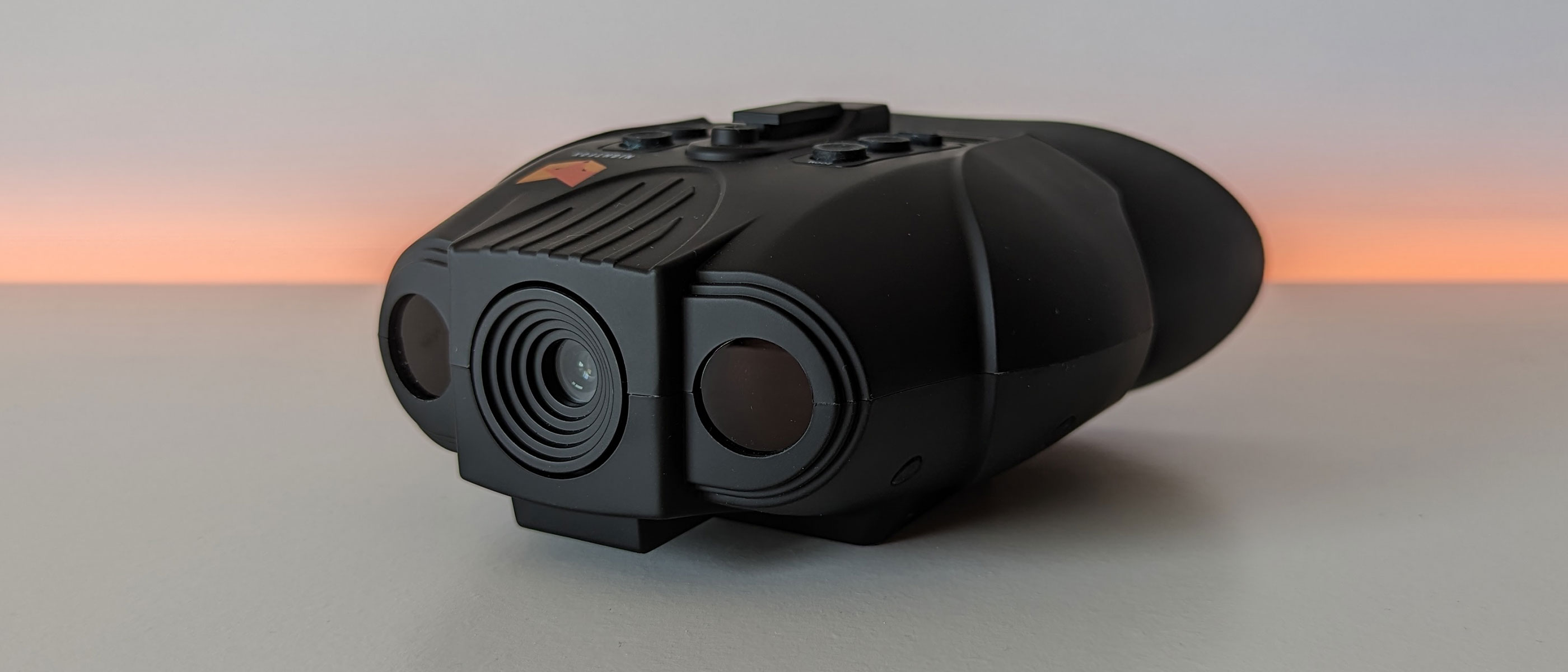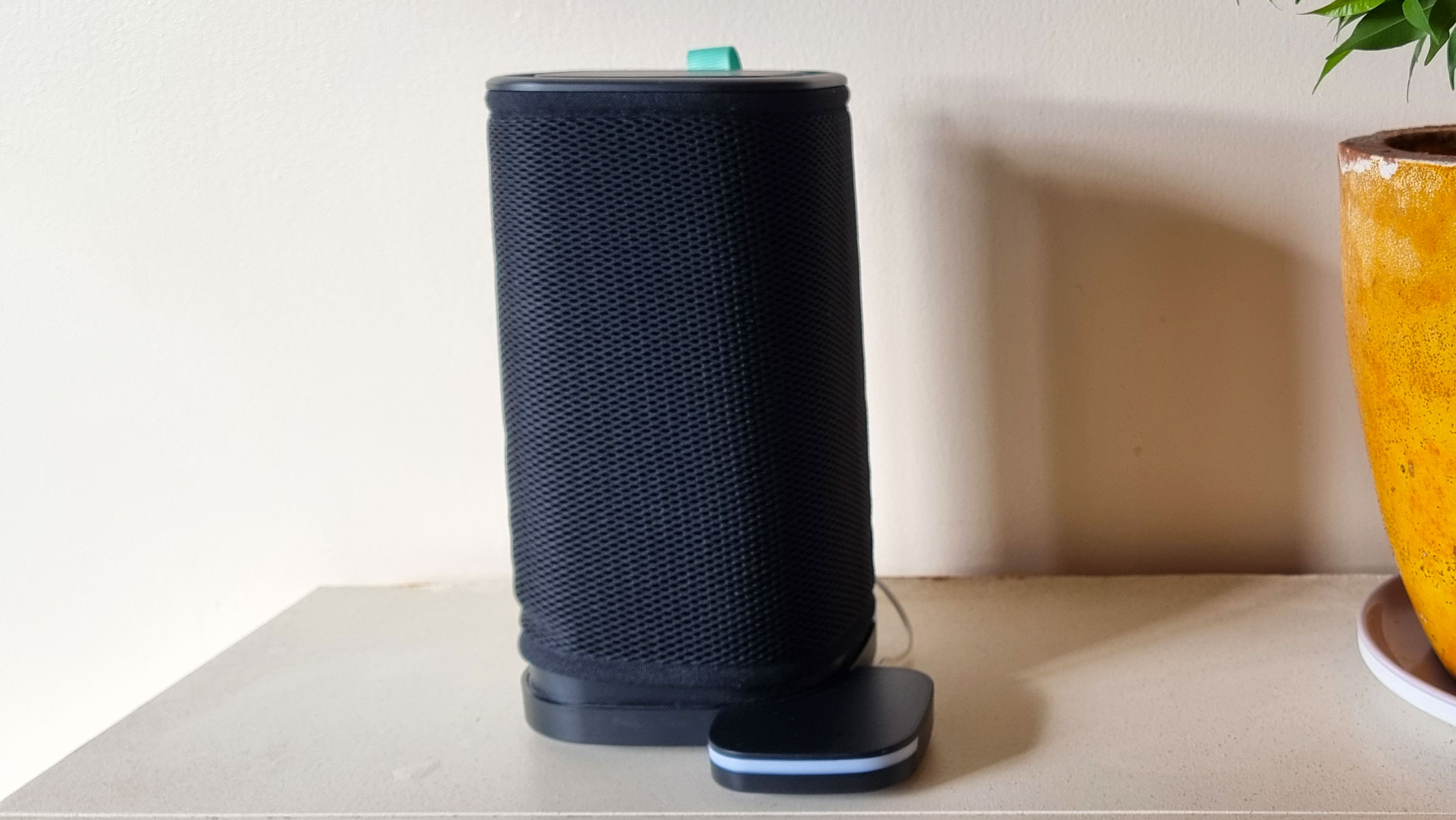Live Science Verdict
A comfortable rubber viewing hood blocks out outside light whilst an internal screen displays sharp scenes, aided by a useful bank of infrared LEDs.
Pros
- +
Good IR performance
- +
Comfortable viewing hood
- +
Infrared LEDs helpful for lighting subjects
Cons
- -
Buttons feel a little budget to touch
- -
Focusing wheel could be bigger
- -
Build quality feels fragile in places
Why you can trust Live Science
The Nightfox Swift night vision binoculars, also billed as night vision goggles, are one of Nightfox's most flexible devices. Straight out of the box these binos offer the ability to attach to the user via neckstrap or head mount with a Go-Pro style accessory. The night vision binoculars can also be mounted straight to a helmet for those that require it.
While certainly not in the premium end of the range of night vision binoculars or goggles (some can cost thousands), this affordable pair do a surprisingly good job at aiding viewers in the dark. They're light, feel comfortable in the hand and are easy to use with wide-spaced buttons making them ideal for operating in dark environments, even without looking at them.
Design: IR-powered Night Vision
Magnification: 1x optical, 2x digital
Viewing range: 75 yards (70m)
Sensor resolution: 640x480
Viewing angle: 34-degrees
Weight: 0.79 lb (360g)
Dimensions: 130x140x65mm
As well as a headstrap, neckstrap and mount for use on helmets, the Nightfox Swift binoculars also ship with a detailed instruction manual, cleaning cloth, hard case with internal netting all in a branded recyclable cardboard box.
It's important to note that there is no recording functionality in the Swifts. Some night vision goggles do accept memory cards and can record what the viewer is seeing, which may be helpful in a range of scenarios for wildlife observers.
Nightfox Swift night vision binocular: Design
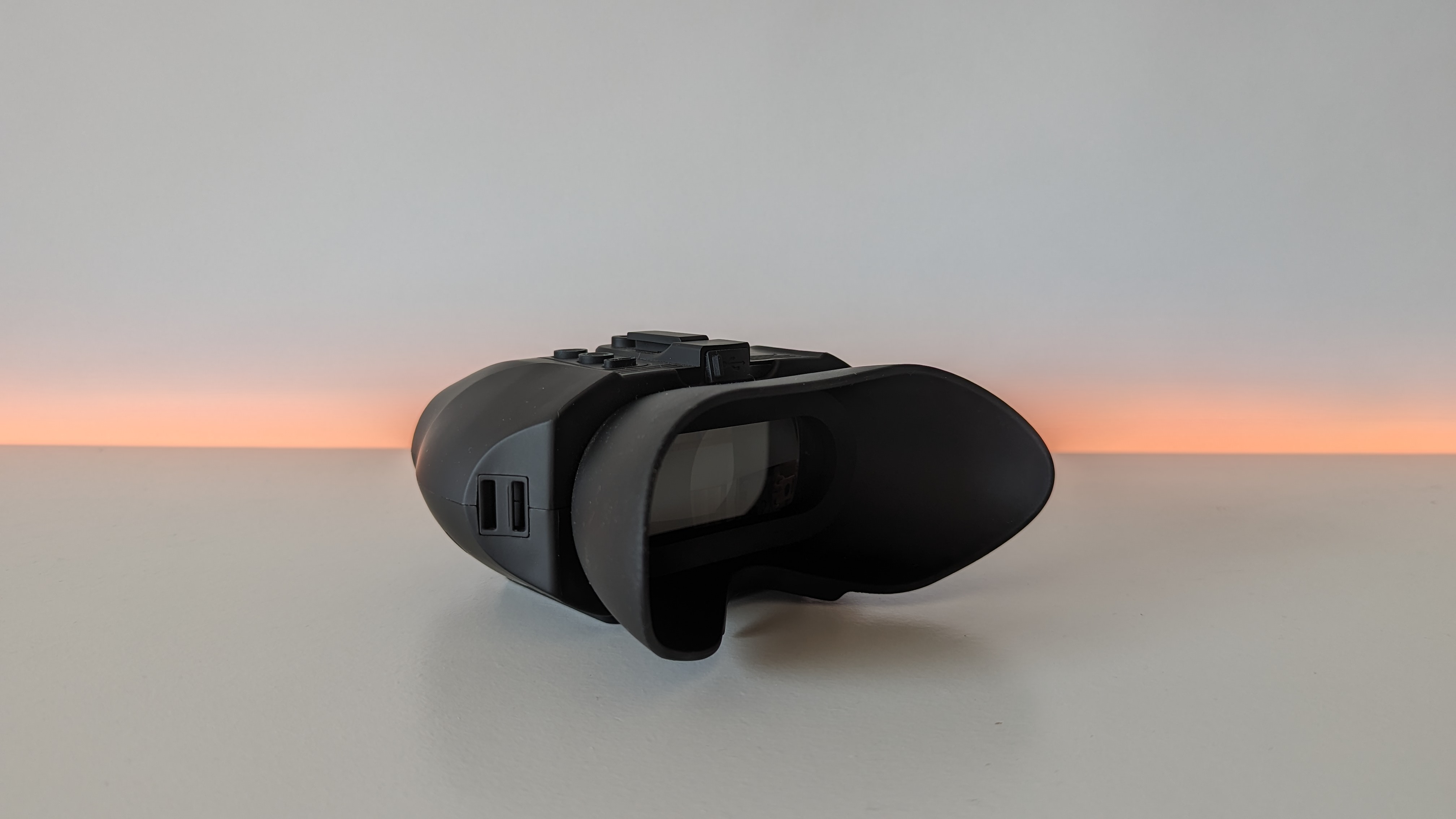
- Lightweight at just 12.7 oz
- Rubber viewing hood is comfortable
- Focusing wheel could be bigger or coated in rubber
We must bear in mind that the Nightfox Swift binoculars are not premium-end night vision goggles, but instead affordable alternatives that do a good job operating at 850nm infrared for hobbyists and enthusiasts. Looking at the binoculars the overall layout of buttons and the main screen is spacious. There's plenty of room on the top of the device between the buttons, which meant operating in pitch blackness was easy for us, so long as we remembered the placement of the buttons (on/off, IR+ and -, and zoom).
The button material could do with some work though, as they catch every small bit of dust and fiber that brushes over them, making the binoculars look messy even just moments into testing. However, this is an aesthetic problem only.
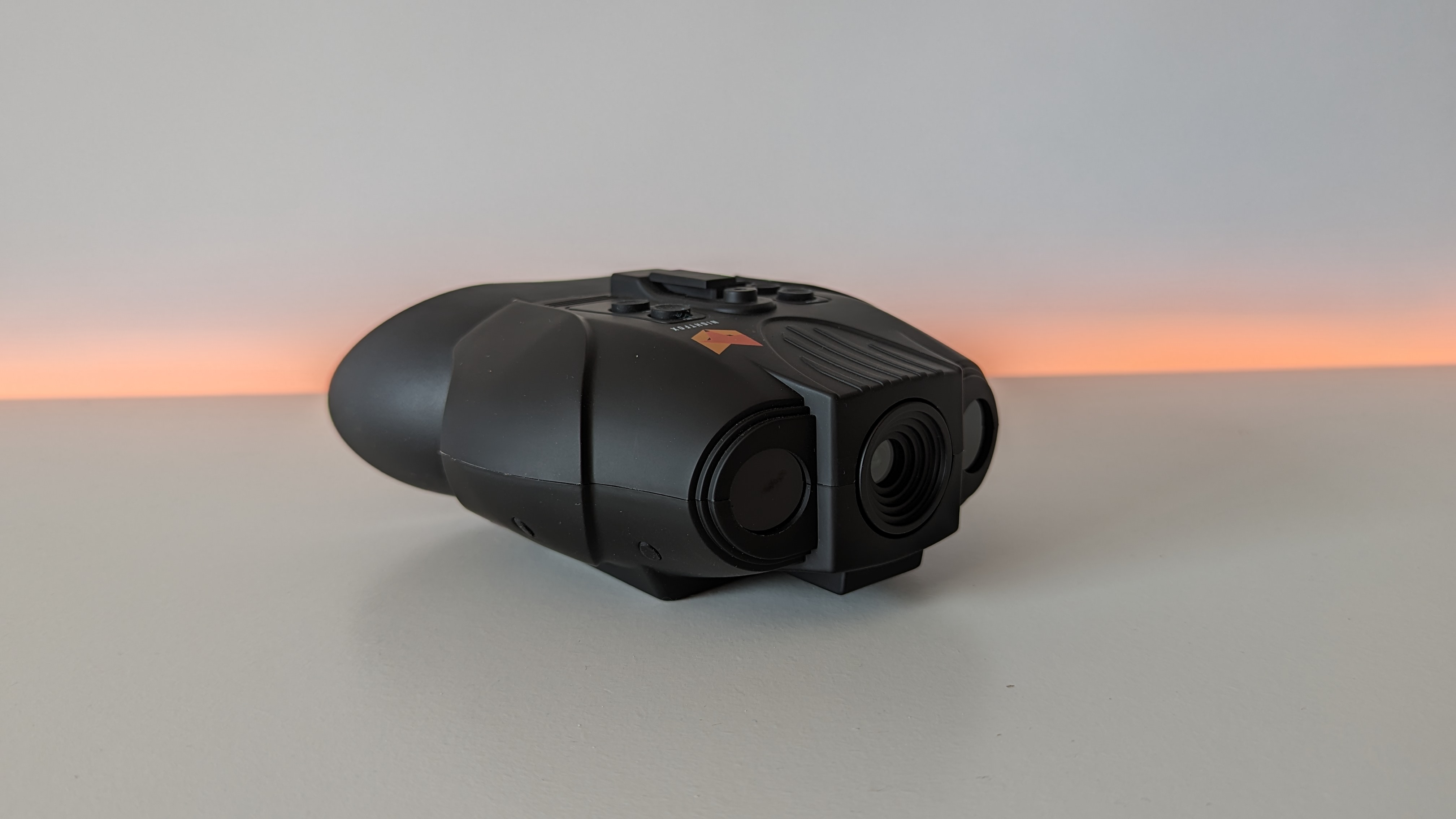
Pressing our eyes to the internal screen, we were pleased with how the rubber viewing hood contoured to the shape of our face. This blocked outside light coming from external light sources like cars or street lights, retaining full clarity on the screen inside the binocular body. Other night vision binoculars we've tested have had stiff rubber hoods and have either been incredibly uncomfortable to press into the facial skin or are unable to effectively block out light.
The focusing wheel underneath the binoculars is usefully placed to avoid accidental knocks during use. Knocks that would otherwise be inevitable operating technology in the dark. However, we feel that this thin, plastic wheel could be wider and perhaps coated in the same grippy rubber the viewing hood is constructed from to aid use when wearing gloves.
Nightfox Swift night vision binocular: Performance
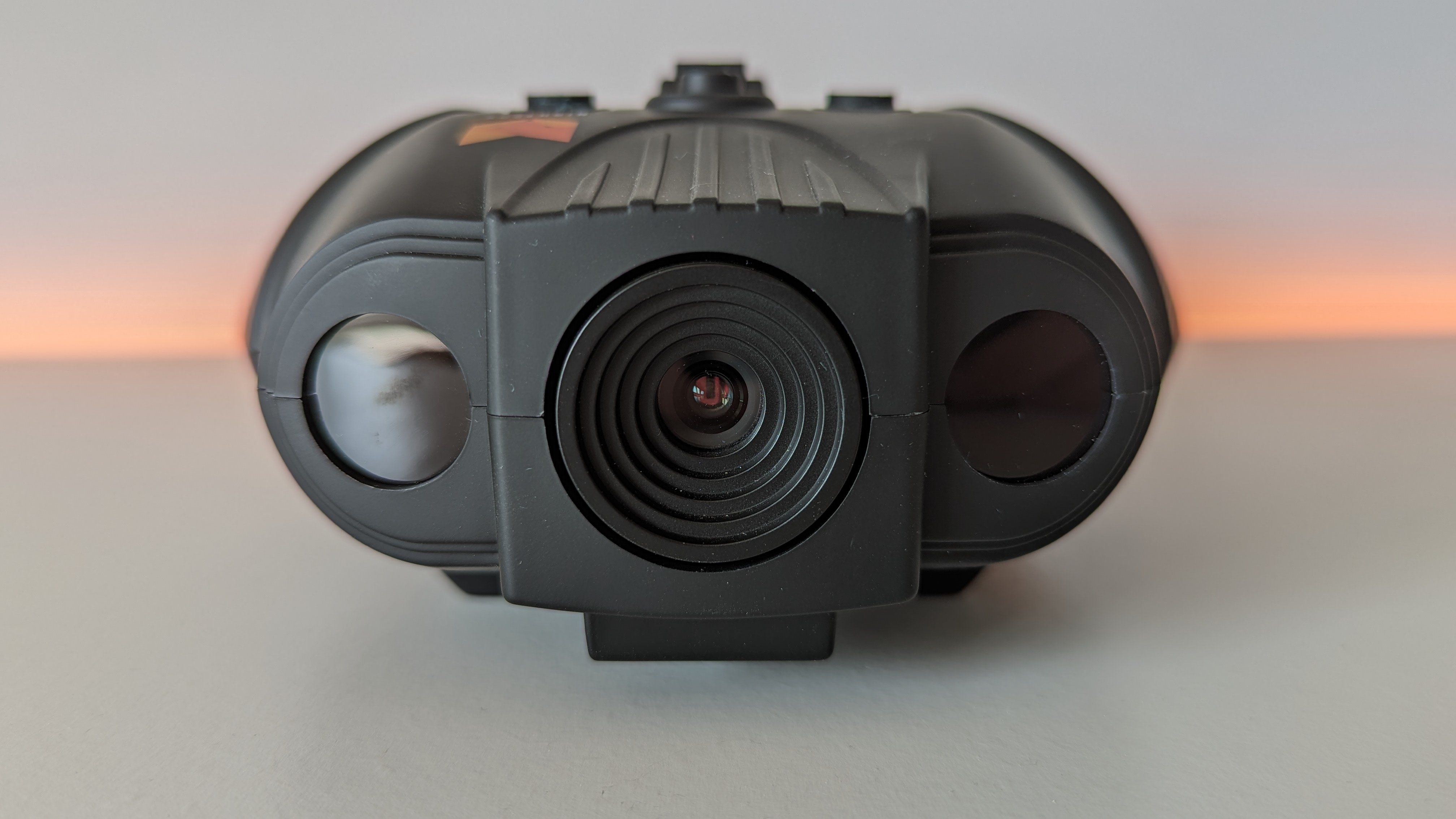
- Balanced views with acceptable highlight and shadow detail
- Infrared lighting lights up significant portion of nearby environment
- Decent usage time when fully recharged
Unlike other budget night vision binoculars, the Swift has an in-built rechargeable battery that can be quickly refilled via a micro USB cable. This gave us approximately 2.5-3 hours of use depending on how often we operated the infrared LED lighting – keeping them on for longer reducing that time as expected. Handily there's a battery icon in the bottom-right of the screen to denote how much charge is left.
We found the viewing distance is concurrent with Nightfox's stated viewable area of around 75 yards (70m), with longer distances visible if there is environmental light pollution from, say cars, street lights or security lights. The views were adequate overall and while the internal screen didn't have high-resolution detail it was plenty clear enough for our purposes and could recognize places, shapes and people easily.
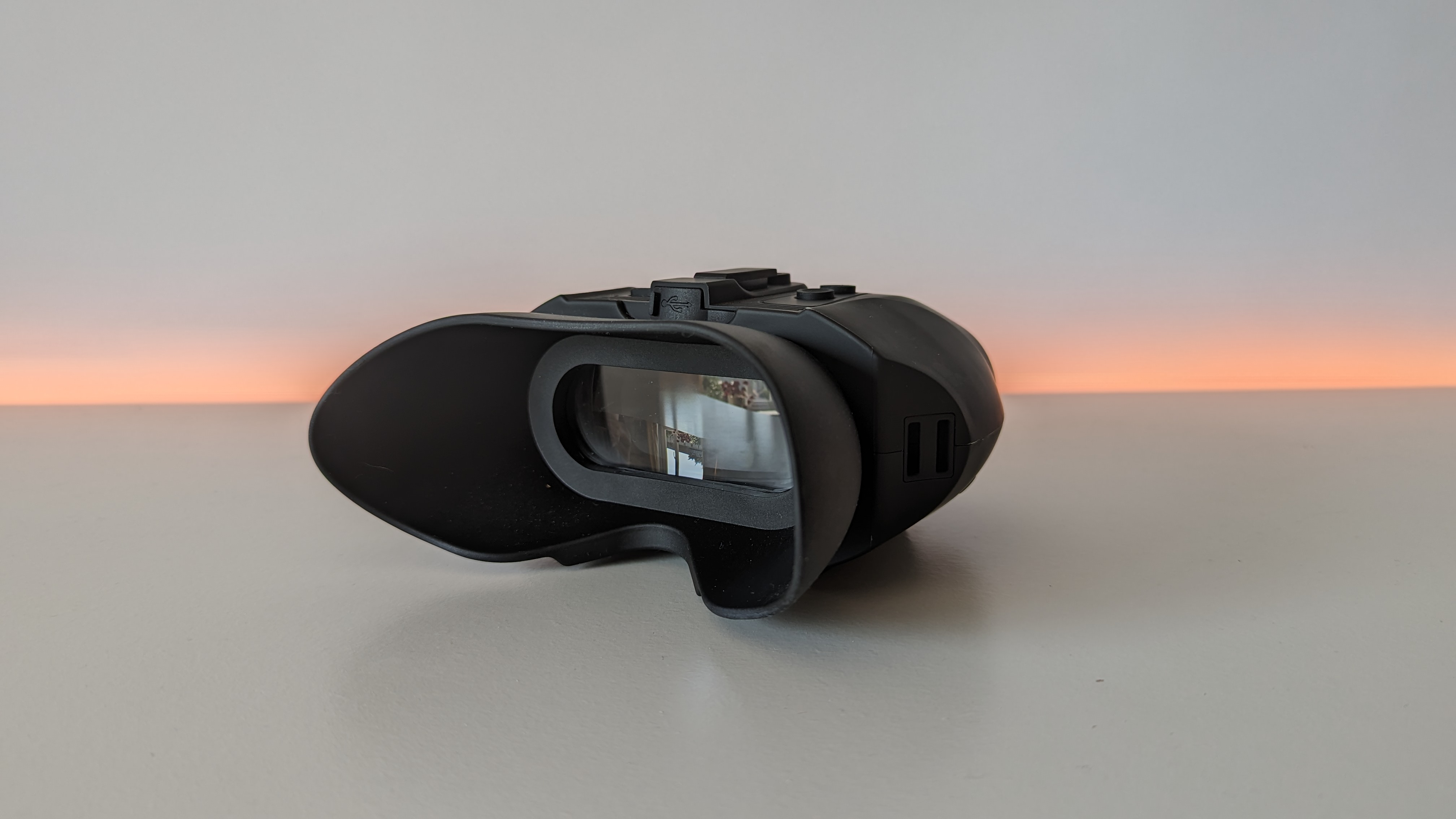
Some observers may want to use these binoculars during twilight, when light levels rise and fall at each end of the day. Luckily, the Swift binoculars have a daytime function. Continue pressing on the IR- button and the infrared capability will drop altogether to reveal an all-color display on the screen showing the world in front of you as it is.
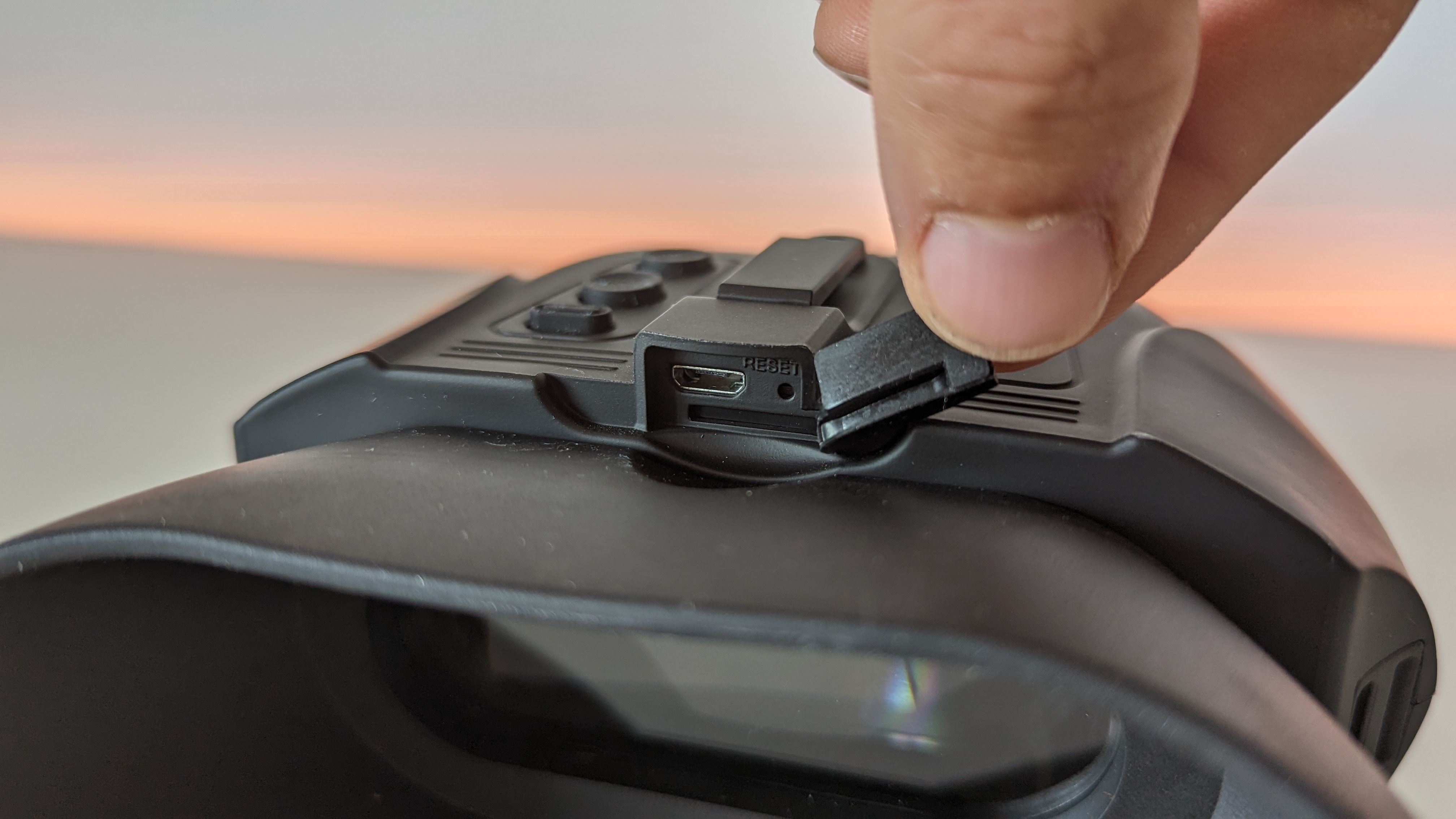
Contrast and detail in this mode is acceptable, but honestly we're not quite sure why this mode exists. After all, taking the binoculars down from the eyes and instead just looking around would give better results. But perhaps for some with poor vision this might be an issue, so the daytime mode on the Swift's could help?
Nightfox Swift night vision binocular: Functionality
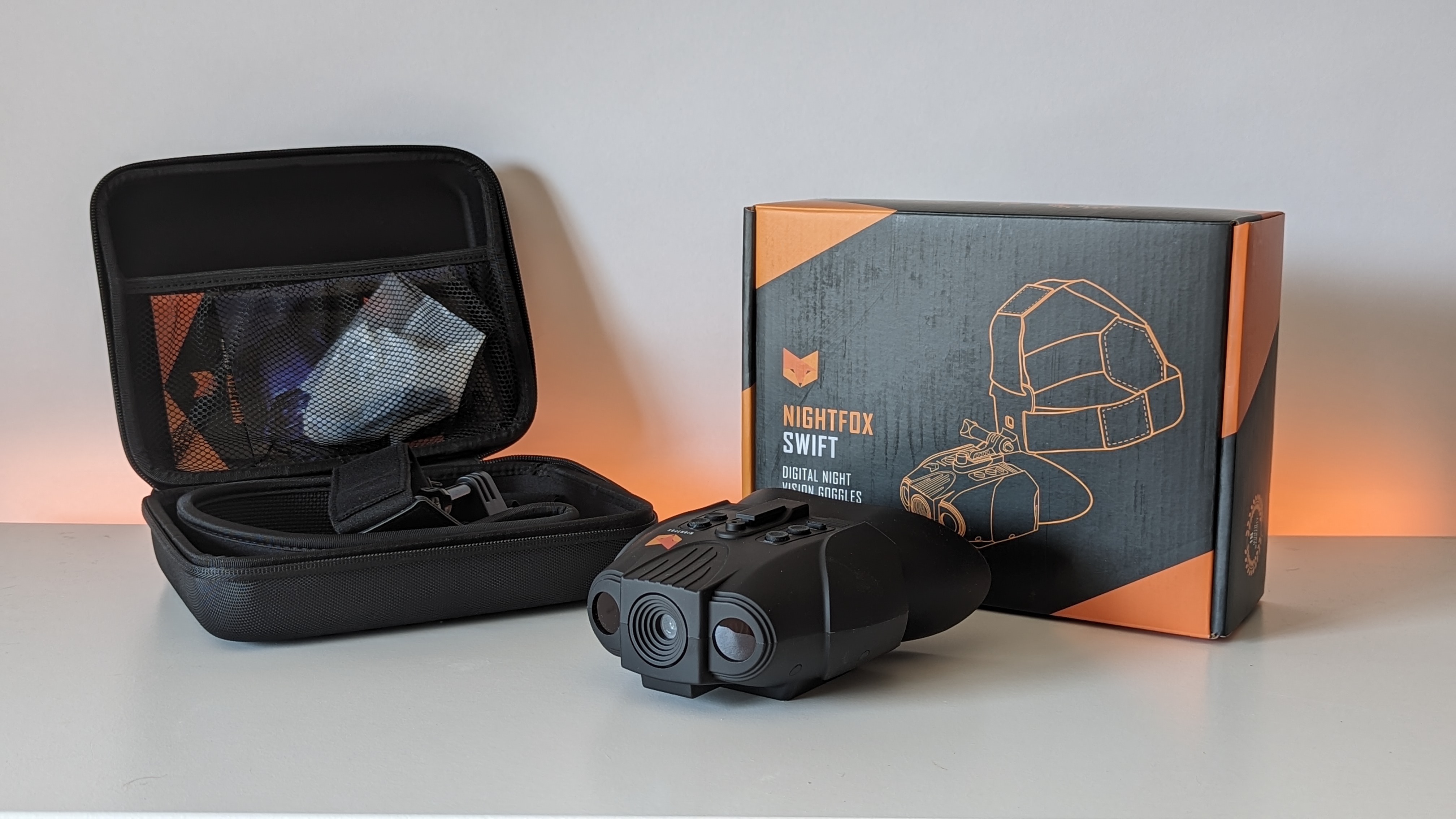
- On-screen instructions helpful for new users
- Zoom feature is okay but a little more zoom power wouldn't go amiss
- Backlight function serves vision in varying light levels
Looking at the top of the Swift's there are five buttons with the front-left labeled for zoom. Rather than having any meaningful zoom, like the optical zoom that some regular binoculars give, this instead makes a digital crop of the screen. That means the zoom degrades with use, but it isn't entirely noticeable because it only increases magnification by up to 2x in, oddly, 11-stop increments. We suppose it's helpful if trying to get a closer look at a particular wildlife subject or to identify something, but a physical step forward (if possible) would likely yield better results.
As light levels fell and our vision became accustomed to the darkness, the backlight function (left-center button, denoted by a small sun symbol) came into its own. There are eight levels of backlight that adjust the brightness of the viewing screen inside the Swift's, from zero to seven with a higher value giving a brighter image. This is helpful because we found dialing in a lower backlight setting during the darkest parts of the night meant our night vision wasn't wholly destroyed and meant we could occasionally pop the binoculars down and look around without fumbling around in the dark.
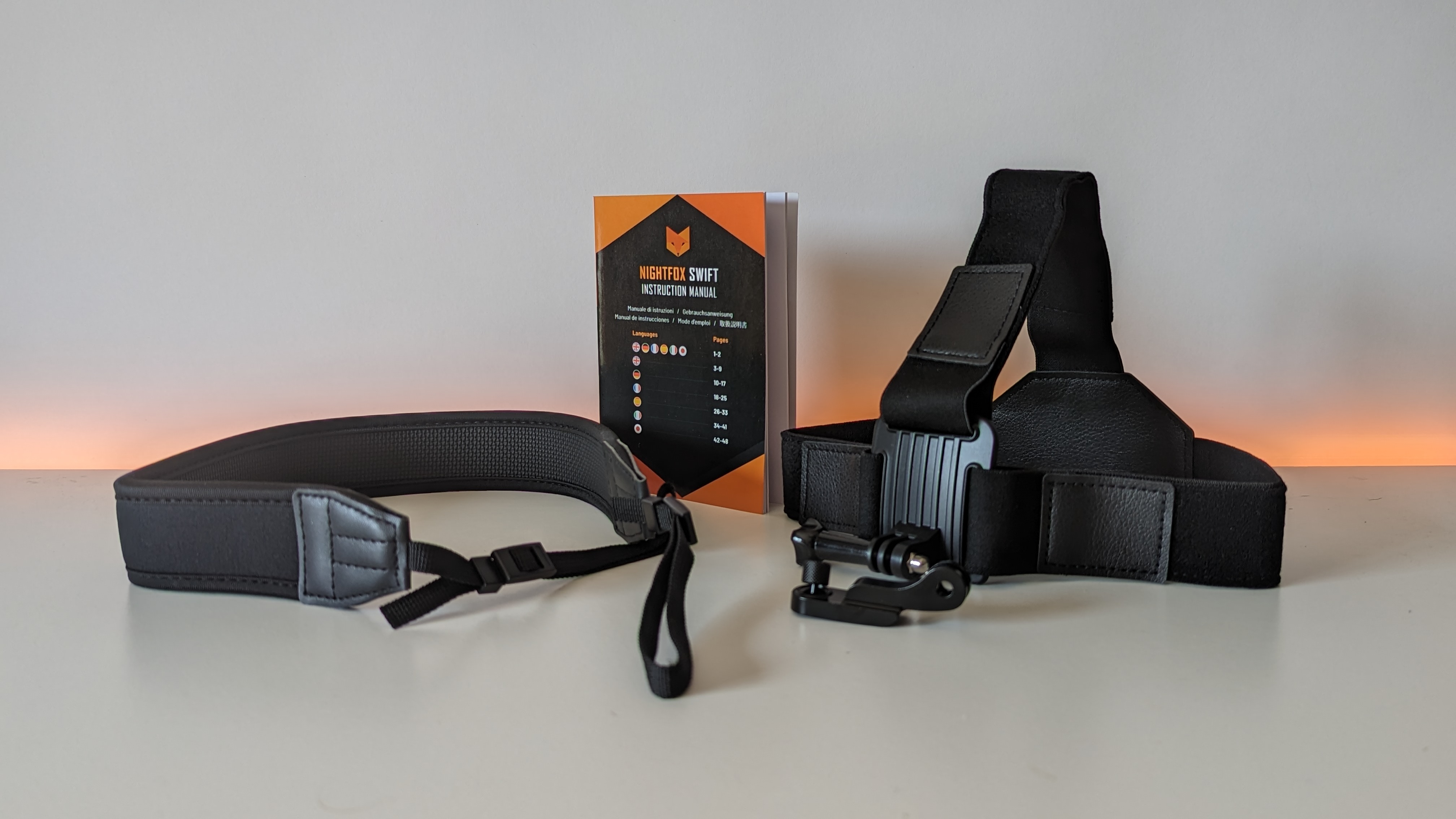
The Nightfox Swift's could be given to anyone, whether they've used night vision goggles before or not and be operated immediately. When we powered ours on, an instruction screen displayed telling us both how to adjust the focus of the binoculars and where the focus wheel is situated. Powering them off results in a giant 'GOODBYE' message in all-caps which, while a strange choice of wording, we suppose would be helpful to the non-tech-minded users.
Inevitably you're going to be placing the binoculars down at some point and in the first few hours of us doing so we noticed the plastic finish on the bottom of the binoculars starting to peel around the sharp edges of the flat square base. This is pretty disappointing considering they cost just under $200 without a discount. Sure, this won't matter much to those who plan to trek through wild places and inevitably get them covered in mud and bang them up a little, but for those who like to take care of their gear it'll be frustrating. Quite how much will peel off in long-term use, we've yet to see.
Should I buy the Nightfox Swift night vision binocular?
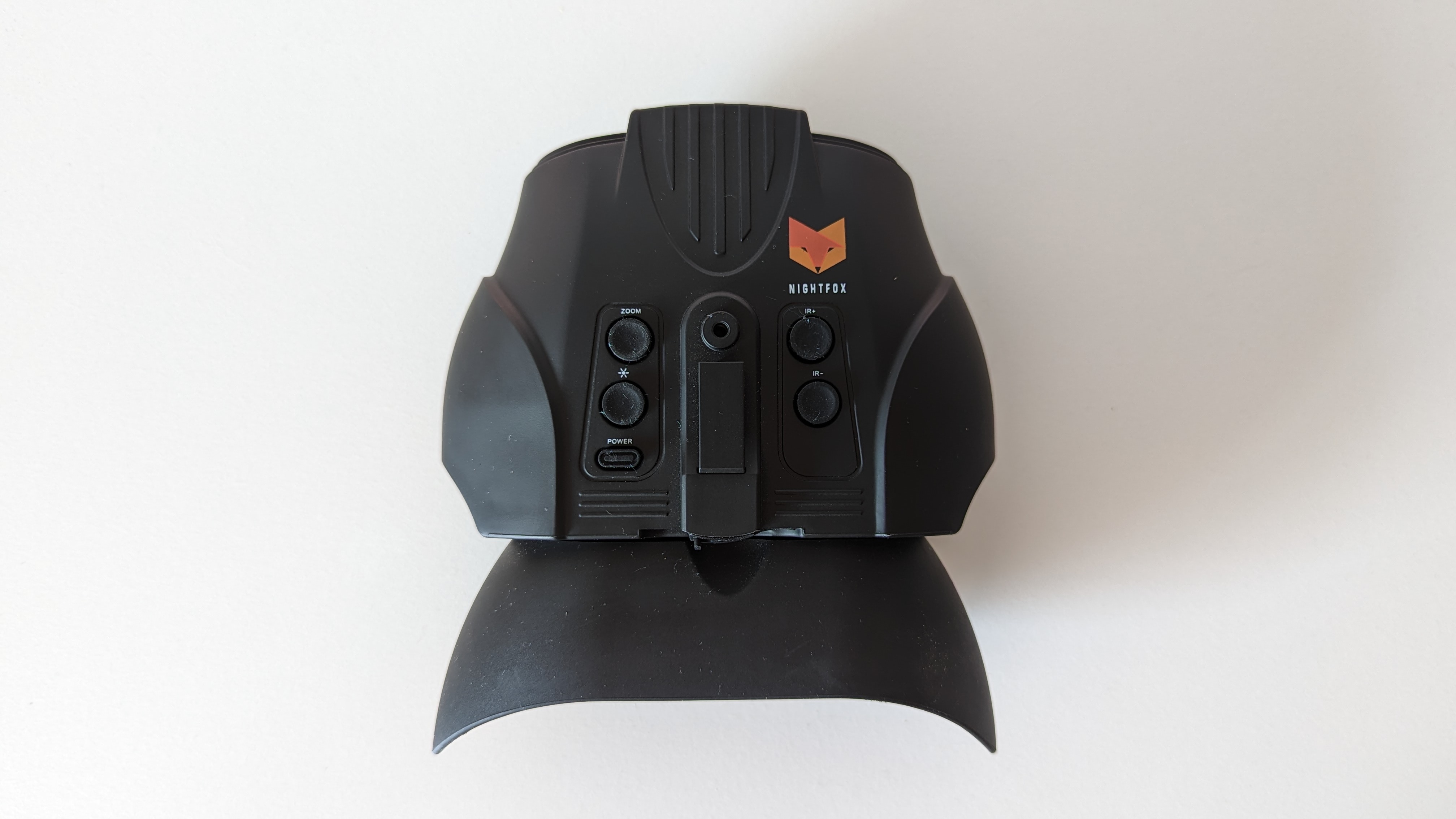
For the price range, the Nightfox swift is about the best pair of night vision binoculars we've tested so far. Simple button layout is well-spaced for night time use and the viewing hood is comfortable and flexible to block out light. The binoculars even have a daytime mode for real color viewing during daytime and twilight.
It also comes with two straps, a hard case, instruction manual and recyclable packaging which, if you utilize a decent discount to bring them down to around $139 (which we have seen regularly during testing) then they're even more appealing.
If you need night vision binoculars for viewing wildlife, or just to add to your exploring kit, then we can happily recommend these are a cheaper option.
If this product isn't for you
Trackers, hunters and night vision enthusiasts in general will likely want to invest a lot of money in a decent night vision device. For that, we'd recommend the Zeiss DTI 3/35. They are a monocular with up to 3937 ft (1200m) infrared range and a battery life of 10 hours which outshines the Nightfox Swift's 70m IR range and maximum of three hours battery life. The Zeiss also has 2.5x optical zoom plus a 4x digital zoom which is particularly handy over those long observable distances.
If the Nightfox Swift binos are a little out of your price range though, Nightfox also sell the 100V which, though cheaper, has a slight boost in viewable range from 70 up to 100m (328 ft) and a much better battery life of 6 hours. However, it takes 8x AA batteries and weighs more than double that of the Swift's. There's no helmet mounting options either, though there is a neckstrap and a tripod connection on the base of the binoculars.

Jase Parnell-Brookes is the Managing Editor for e-commerce for Live Science and Space. Previously the Channel Editor for Cameras and Skywatching at Space, Jase has been an editor and contributing expert across a wide range of publications since 2010. Based in the UK, they are also an award-winning photographer and educator winning the Gold Prize award in the Nikon Photo Contest 2018/19 and named Digital Photographer of the Year in 2014. After completing their Master's degree in 2011 and qualifying as a teacher in 2012, Jase has spent the last two decades studying and working in photography and publishing in multiple areas, and specializes in low light optics and camera systems.
Science news this week: Possible signs of life on another planet and a 'useless' female organ
Universe may revolve once every 500 billion years — and that could solve a problem that threatened to break cosmology
Scientists hijacked the human eye to get it to see a brand-new color. It's called 'olo.'
